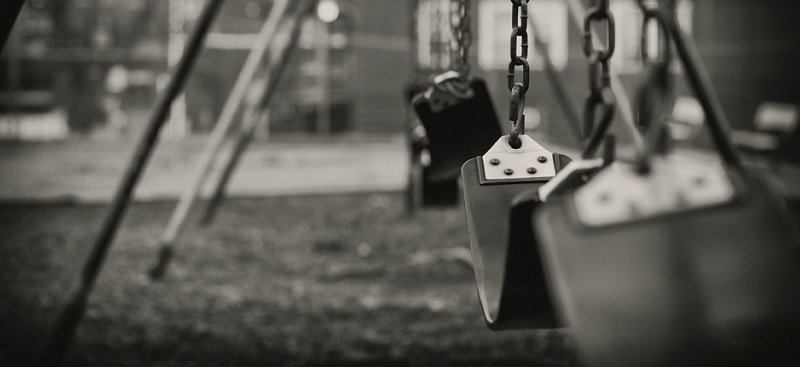One of our jobs as parents is to create childhood memories that will sustain them through their lifetime; memories that will be told around the camp fire, at weddings, and even at funerals. Memories so beautiful and heart felt they make us smile, laugh, and cry. Lyrics from a Cat Stevens song illustrate real concerns regarding preserving childhood and play spaces “We’ve come a long way, we’re changing day to day, but tell me where do the children play?” In the rush to digitalize childhood, society seems to have forgotten critical essential components needed to create a sustainable child. Play spaces where children can run, yell, and be free to imagine other worlds are rapidly deteriorating without so much as a backward glance. Tall swings, long slides and merry-go-rounds were standard equipment in playgrounds of the past, and Toys “R” Us was a birthday and Christmas must. Children use to “play out” until dark and get into adventurous mischief because parents weren’t monitoring their every move. Students either biked or walked to school and participated in a vast diversity of after school sports and club activities. Recesses were long and PE teachers ensured they were packed with loads of gym, playground and game-type activities. Children seemed happy…only a 20 years ago, they seemed secure, well adjusted, and on their way to becoming independent adults with bright futures, and – happy memories to sustain them through the tough times. Fast forward to today. Toys “R” Us went belly up after 70 years of providing kids with thrilling toys. Playgrounds are infantile and dilapidated with licencing forced removal of everything fun or challenging. Streets and parks are quiet and deserted. As epidemic levels of obesity climb, kids are dropped off at school where No Child Left Behind initiatives have eliminated PE and decimated recess. When students are allowed recess, they spend their time on mandated BYOD screens…sedentary, inside, alone, and sad. With the onset of video games and social media has come pervasive and escalating child behavior management issues including aggression, depression, anxiety and suicide. As outdoor rough and tumble imaginative play rapidly becomes a thing of the past, society might be wise to consider the following nature and movement-based initiatives to enhance child development, behavior and learning.
While parents have known for decades that nature offers serious benefits to our physical and mental health, the move from active outdoor play to passive and sedentary indoor screen watching has been pervasive and rapid. Citing ‘fear’ as a primary motivator, parents universally agree that outside is “not safe” and consequently keep their children inside. What is odd is the general acceptance by parents that online sites are ‘safe’ even with the alarming rise in online pedophile presence. Studies abound showing that nature’s ‘green space’ is the most attention restorative agent available to teacher to enhance learning, yet many students are kept inside during recess to finish work or as a disciplinary measure, or even worse, allowed to stay inside the classroom and gaze absently at their phones or watch movies. The downside of keeping kids sedentary, isolated and indoors is taking a heavy toll on our children. UBC’s Healthy Early Intervention Partnership study of 47,000 preschool children in 2016 showed 1 in 3 children enter school developmentally delayed, 1 in 3 are obese or overweight (Stats Canada), and 1 in 7 children and youth have a diagnosed mental illness (Canadian Mental Health Association, 2016). While our children have never been sicker than they are today, we can reverse this destructive trend through improved engagement in outdoor play by focusing on the following evidence based school, home and community initiatives.
- Allow 3-4 recess breaks/day for research proven improved attention and learning, better grades, decreased need for movement ‘body breaks’ in classroom, decreased problematic behaviors and improved self-regulation. CBC interview (7:30 min) with principal Paul McKay and classroom teacher talk about every hour have a 15 min. break with improved attendance (up 5%), improved grades, happier students, less lethargy and improved classroom participation. Suggest no more than one hour in classroom followed by 15 min. gym or playground break.
- Enhance existing playgrounds with age appropriate and challenging equipment. All playground equipment must be anchored in cement with 6-8” of absorbent surfacing to ensure safety (Canadian Standards Association) with coverage of structures for sun, rain, and snow protection. Think in terms of the following age groups each needing devices relevant to their age, inclusively arranged to accommodate people across the life span:
- 0-5 years: infant/toddlers swings, saucer swing for social, slides, extensive trike path, covered sand box, water table, climbing structures.
- 6-12 years: merry-go-round, high swings/slide, cargo net structure (Lunar Blast), climbing wall outside building,
- 13-18 years: obstacle course equipment,
- Teachers and parents: cardio stepper, large covered fire pit with surround seating.
- Elders: benches, picnic tables, covered areas.
- Start each day outside with school ‘tough mudder’ run or inside in gym with obstacle course and loud music; do one class per day outside.
- Consideration given to allowing alternate forms of creative physical play through allowing students to build forts or use a variety of construction type materials and ‘loose parts’ (anything that’s not bolted down).
- Reduce rules and increase risk and challenge while also maintaining a safe and congenial play environment. Making playgrounds more dangerous with less parent/teacher intervention and more loose parts promotes creativity and imagination, while also improving independence and self motivation. Consider creation of a rough and tumble play zone for those kids who need more intense play opportunities. No Rules Schools actually improve behavior and enhance learning!
- Establish sensory-motor room in schools with inclusion of the following areas: hangout space (couch, carpet, beanbag chairs), chillout space (quiet space behind bookcase with beanbag chair), and workout space (TRX Strapping, slam balls, free weights, exercise bike/rowing machine/elliptical). EA’s could be assigned to this room 2-3 times per day at designated intervals and students sent there to have their sensory and motor needs met (as opposed to being sent to principal’s office).
This article was written by pediatric occupational therapist, biologist, international speaker, and author Cris Rowan who is passionate about changing the ways in which children use technology. Cris’s website www.zonein.ca, blog www.movingtolearn.ca, and book www.virtualchild.ca can be referenced for additional information. Cris can be reached at info@zonein.ca.





One Response
i fully agree kids need to get outdoors and fully used their bodys.and minds and imaginations..climb .swing .slide and play play with all their body .im a stay at home dad .my only child is shortly four years .july 22..i wnt him out door in our complex .we have 450 units/flats here..and the play equipment 1960 is dismile..see saw six swings.one steel monkey bars . thats it..and we have about 800 kids here ..no jungle gyms here anywhere..nothing age appropreate…im fighting to get it changed. the fight back i get,,its expensive..the kids will get hurt. the kids will break it..yet there is a privately own creche in the complex,,that only to be used mon to fri.by the children go there..about 50..and it has a jungle gym thats just fine,it 25years old. not broken..but none of the other 400 kids are allowed in to use it..yet none of them ever get hurt,,go figure..